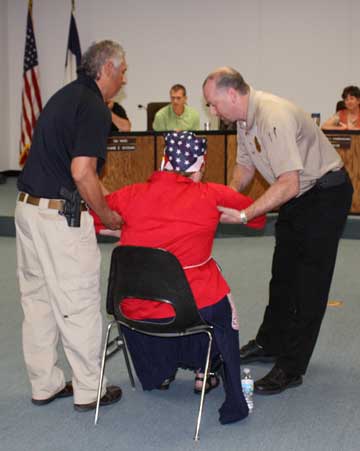Little Falls is a small town along the Mississippi River in central Minnesota. Robin Hensel attended two City Council meetings. She sat in the front row and displayed large signs depicting dead and deformed children, thus blocking the view of some members of the public. The first City Council meeting was adjourned and rescheduled, but Hensel was removed from the second meeting and charged with disorderly conduct for “disturbing an assembly or meeting.”

Both the District and Appellate courts upheld Hensel’s conviction. Hensel argued that the disorderly-conduct statute was unconstitutionally over broad, in violation of the First Amendment. The lower courts had found that a person could be guilty of disorderly conduct only if it was the person’s conduct—not the content of the person’s message—that actually caused the disturbance.
The Minnesota Supreme Court, however, found merit in Hensel’s challenge. In a 4-2 decision, the Court found that the statute was broad enough as to chill various forms of protected expression, even if that expression was unintentionally disturbing, and that the definition of “assembly or meeting” was so broad that any group of two or more people would qualify. The Court declined the State’s invitation to interpret (or “construe”) the statute narrowly. According to the Court, there was no narrowing construction that would not require radically rewriting the actual statute. The Court therefore held the statute unconstitutional and threw out Hensel’s conviction.
Case: Minnesota v. Hensel, No. A15-0005 (Minn. Sept. 13, 2017) (opinion here)
[…] is another case involving the constitutionality of laws that criminalize “disorderly conduct,” this […]
LikeLike
[…] him and removing him from the meeting. (We’ve twice reported on similar cases, here and here.) Today, the Supreme Court ruled in his favor in an 8-1 decision. We won’t get into the […]
LikeLike